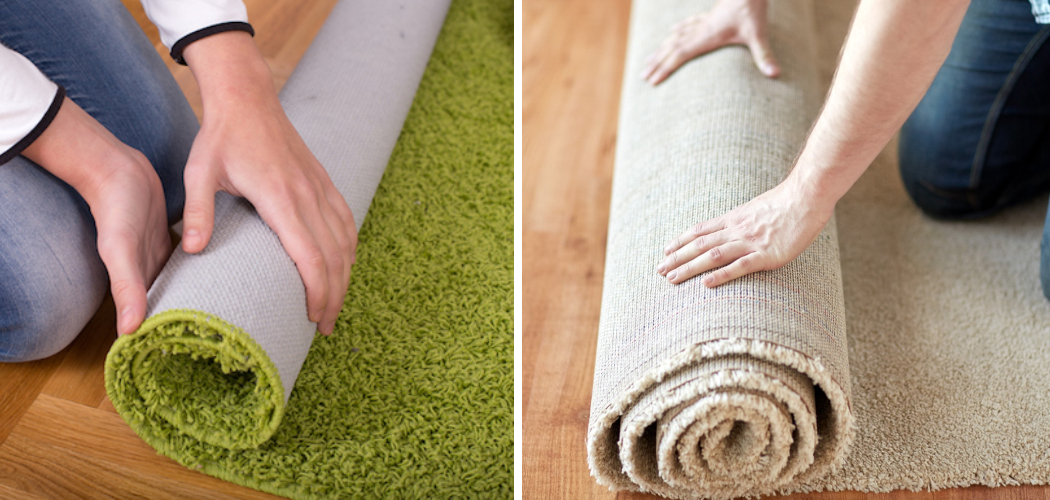When it comes to storing rugs, proper handling and storage techniques are essential to preserve their quality and prolong their lifespan. Rolling up a rug for storage is a practical and effective method to keep it in good condition while maximizing space.
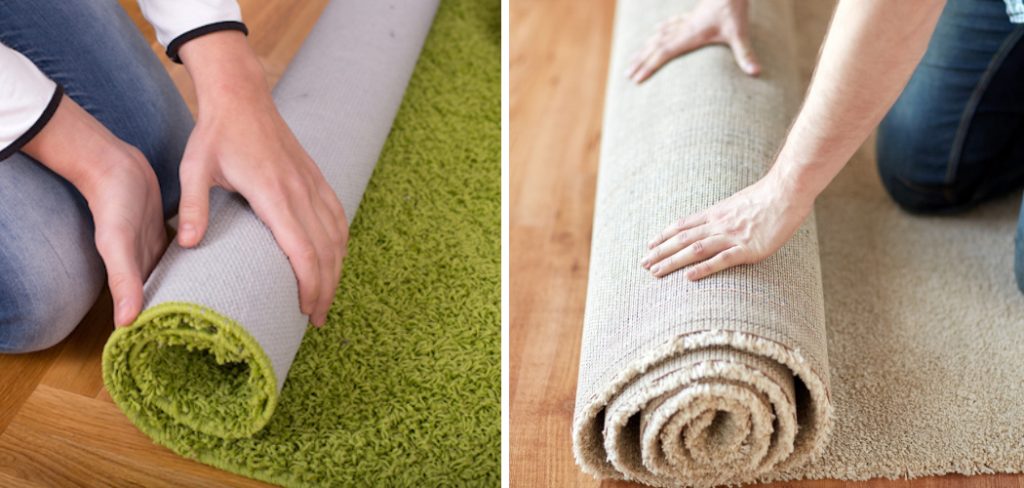
However, it’s crucial to follow the correct steps to prevent damage and ensure the rug remains in optimal shape. In this article, we will guide you through the process of how to roll up a rug for storage, providing valuable tips and techniques along the way.
We will cover essential preparations, such as cleaning and inspecting the rug, as well as the correct rolling and securing methods to prevent creases and protect against moisture and pests. By following these guidelines, you can confidently store your rug, knowing it will be properly preserved and ready to enhance your space when the time comes to unroll it again.
Is It Better to Roll or Fold a Rug?
When storing a rug, it is important to consider the best way to do so in order to keep the rug in good condition. Generally, it is best to roll up rugs when putting them away for long-term storage. This will help prevent wrinkles and creases from forming as well as protect against dust and dirt buildup. However, folding a rug can be beneficial if you plan on storing the rug for a short period of time, or if the size or shape of the rug does not allow for easy rolling.
If you decide to fold your rug, make sure that you use acid-free paper between each layer of fabric in order to protect the fibers and colors from damage due to atmospheric chemicals or humidity changes. When folding, place the rug face down and fold it lengthwise in thirds. Then, fold the width of the rug in thirds to create a smaller package.
No matter what method you choose for storage, make sure that your rug is clean before rolling or folding it. Vacuum both sides of the rug and spot-clean any stains with mild soap and lukewarm water. Allow the rug to air dry completely before rolling or folding it for storage.
Will a Rolled Up Rug Flatten?
Yes, a rolled up rug will eventually flatten. When storing your rug for an extended period of time, you should periodically unroll the rug to avoid permanent creases or shapes. This may take some time, depending on the size and weight of the rug, but it is important to give it a chance to lay flat again as its fibers will eventually relax.
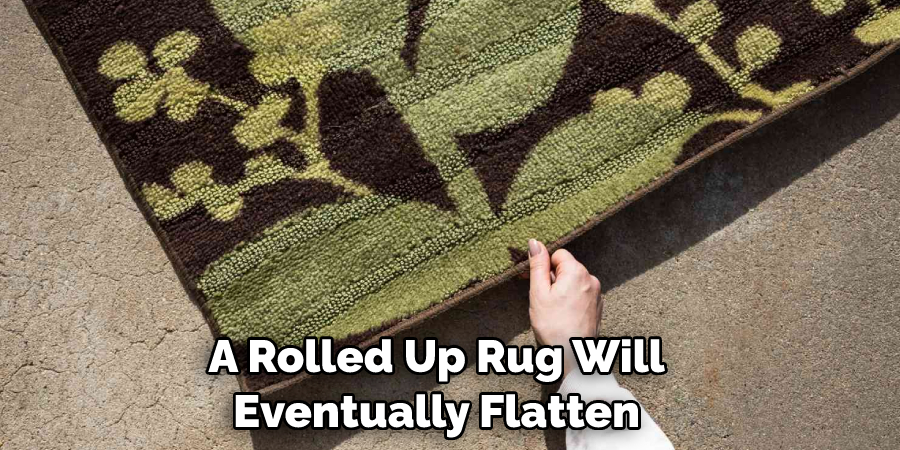
When unrolling the rug after long-term storage, you may also want to place it in a different direction than it was originally stored. This will help the rug lay flat and prevent it from forming creases on one side.
10 Methods How to Roll up a Rug for Storage
Method 1: Clean and Prepare the Rug
Before rolling up a rug for storage, it’s crucial to clean it thoroughly. Start by vacuuming both sides of the rug to remove any loose dirt and debris. If there are any stains, address them using an appropriate rug cleaner or consult a professional cleaner.
Allow the rug to dry completely before proceeding to the next step. Although this might seem like a tedious task, it will greatly reduce the chances of mold growth. While you wait for the rug to dry, prepare a storage area.
Method 2: Inspect for Damage or Pest Infestation
Take the time to inspect the rug for any signs of damage, such as tears, fraying, or moth infestation. If you spot any issues, it’s best to address them before storing the rug. Repair any tears or frays and treat any pest infestation to prevent further damage during storage.
Once you’ve confirmed that the rug is in good condition, it’s time to move on to the next step. Vacuum both sides of the rug thoroughly to remove any dirt or debris that could cause damage during storage. This is especially important for wool, sisal, and other natural fiber rugs.
Method 3: Roll the Rug on a Clean Surface
Find a clean, spacious area where you can roll the rug. Lay a clean sheet or a piece of muslin fabric on the floor to create a protective layer for the rug. This will prevent it from coming into direct contact with the ground and minimize the risk of dirt or moisture seeping in.
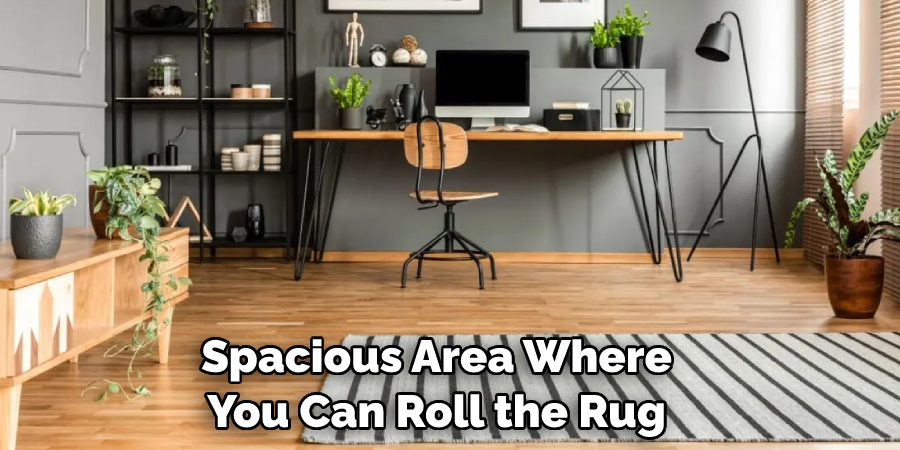
Place the rug on top of the muslin fabric face down. Make sure it’s completely spread out and flat. Start at one end and carefully roll it up from the edges towards the center. Make sure to keep the rug tight so that there are no wrinkles.
Method 4: Roll from One End to the Other
Start rolling the rug from one end, making sure to roll it tightly and evenly. Avoid rolling it too loosely, as this can lead to creases and wrinkles. Use your hands to guide the rug and keep it aligned as you roll. For larger rugs, you may need assistance to ensure a smooth and even roll. Once the rug is rolled, use the rope or twine to bind it and prevent the ends from unrolling.
Finally, secure the roll of rug in a plastic sheet and store in an upright position. This method of rolling works best for lightweight rugs that won’t be stored for extended periods of time. It is a convenient and efficient way to store a rug until it is needed again.
Method 5: Use a Rug Padding or Tubes
To maintain the shape and structure of the rolled rug, consider using rug padding or tubes. Place a rug padding or a large cardboard tube along the width of the rug before rolling. This will help the rug maintain its shape and prevent it from sagging or developing uneven areas. For larger rugs, you may need two tubes.
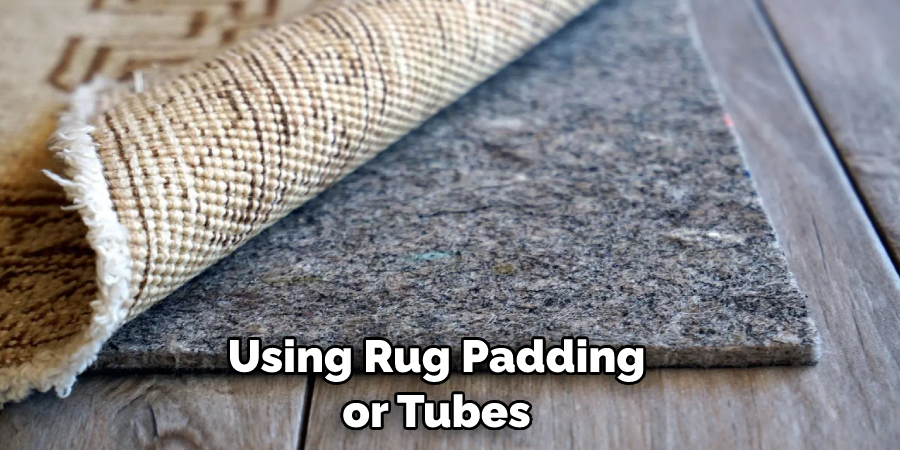
Once the rug is rolled up with the padding or tubes inside, secure it with a string or wrap it in a plastic sheet. This is a great way to ensure that the rug won’t be damaged while in storage for an extended period of time. If possible, store the rug in a climate-controlled area as extreme temperatures can damage it over time.
Method 6: Secure the Rolled Rug
Once the rug is rolled tightly, secure it using cotton twine or nylon straps. Wrap the twine or straps around the rolled rug at regular intervals to keep it firmly in place. Be careful not to tie it too tightly to avoid causing indentations or damage to the rug fibers.
Method 7: Protect Against Moisture
Moisture can be detrimental to rugs during storage, leading to mold or mildew growth. To protect against moisture, wrap the rolled rug in a breathable material such as muslin fabric or acid-free paper.
Avoid using plastic wraps, as they can trap moisture and promote condensation. This method should be used in conjunction with other methods, such as storing the rug in a cool, dry area away from direct sunlight and heat sources.
Method 8: Elevate the Rolled Rug
To further safeguard the rug against moisture, elevate the rolled rug off the ground. Place it on a pallet or wooden boards to create an airflow underneath. This will prevent any moisture that may be present on the floor from transferring to the rug.
Be sure to check the pallet or boards for any signs of moisture before use. Also, make sure that the boards are wide enough and strong enough to support the weight of the rug, otherwise it could cause damage.
Method 9: Store in a Cool, Dry Location
Choose a storage location that is cool, dry, and well-ventilated. Avoid areas prone to high humidity, such as basements or attics, as they can promote mold growth. Ideally, store the rug in a climate-controlled environment to minimize any fluctuations in temperature and humidity.
Method 10: Regularly Check and Unroll the Rug
To ensure the rug remains in good condition during storage, periodically check on it and unroll it for a brief period. This will allow the rug to breathe and prevent any permanent creases or folds from forming. Aim to unroll the rug at least once every six months to inspect its condition and give it some air.

Conclusion
Properly rolling up a rug for storage is key to preserving its quality and maximizing space. By following these simple steps, you can make sure that your rug stays in optimal condition while keeping dust and pests away.
Remember to clean and inspect the rug first, then choose the best method of folding or rolling based on your storage needs. Finally, make sure you unroll and fluff the rug periodically in order to avoid permanent creasing or shapes due to long-term storage. With this guide, we hope you feel more confident about how to roll up a rug for storage!
